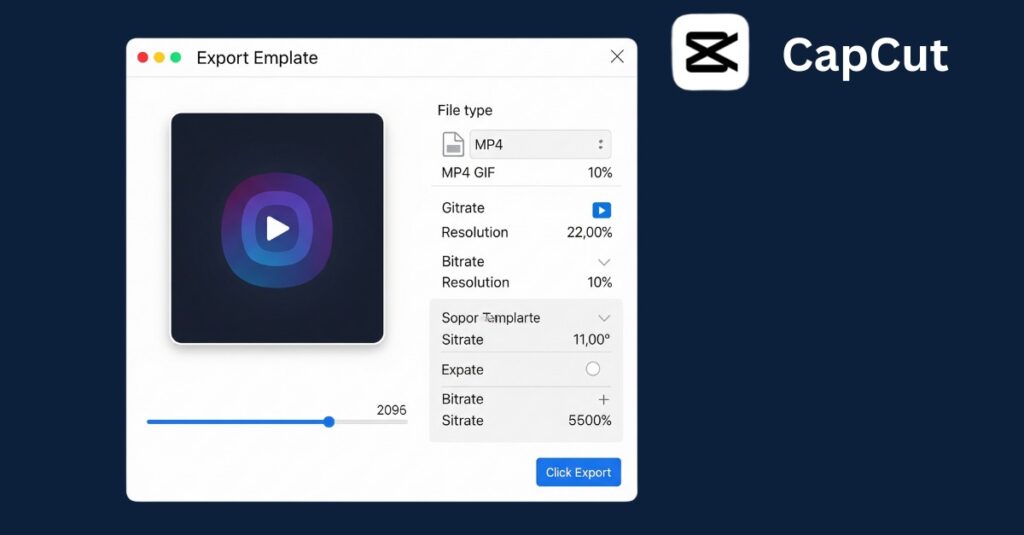When you’re creating video content regularly, repetition isn’t always a bad thing. In fact, repeating your best-performing visuals and layouts can help your audience recognize your brand and style instantly. CapCut makes this easier with its ability to export template presets.
By exporting a CapCut template you’ve customized, you can reuse the same style across multiple projects. This streamlines your editing, helps maintain brand consistency, and saves a huge amount of time especially if you create for platforms like TikTok, Instagram, or YouTube Shorts.
What Is a CapCut Template and Why Customize It?
Understanding the Power of Pre-Designed Layouts
CapCut templates are pre-designed editing structures with transitions, text overlays, music timing, and visual effects already in place. These are great for users who want quick results without starting from scratch.
But what if you find a layout that’s almost perfect? That’s where customization comes in.
Editing a template allows you to apply your own color scheme, font styles, media clips, and timing. This ensures the final video reflects your unique brand, not just another trend.
If you’re new to editing, exploring ready-made pro capcut templates helps you understand layout logic before saving your own. Once you learn the flow of these structures, exporting your customized version becomes a creative shortcut.
Why Custom Templates Save Time
Every time you start a new video, you don’t need to redo your intro, reselect transitions, or adjust your logo placement. Instead, with a saved preset, you can just drop in new content and your video is halfway done.
How to Create and Save a Custom Template in CapCut
Step 1: Open and Edit an Existing Template
Start by selecting a CapCut template that’s close to what you need. Tap “Use Template” to load it into your project. You can then replace the stock footage with your own clips or photos.
Adjust timing, transitions, font styles, and filters. Add your watermark or logo in the corner for brand recognition. You can also switch out the music for one that fits your niche or mood better.
Step 2: Save Your Project as a Reusable Preset
Once your customized version is complete, you can save it. Tap the export option, but instead of uploading it directly, choose to save the project file (not just the video output). This way, the entire structure remains editable later.
On CapCut, saved projects can be duplicated. So next time you want to create a similar video, just copy the project, change the clips or text, and re-export.
Step 3: Organize Your Presets by Purpose
If you’re managing content for different campaigns or clients, create folders for each category like “Tutorial Format,” “Behind-the-Scenes Style,” or “Product Launch Reel.” This keeps your workflow fast and focused.
Exporting and Reusing Presets Across Projects
Make Branding Automatic
Once you’ve saved a CapCut template as a project file, you’re essentially building a library of branded video assets. The structure, style, and rhythm stay the same only the media and text change.
This is especially helpful for creators, marketers, and agencies producing high volumes of content.
Most creators save time by using Trending CapCut templates as a base, then exporting and reusing them as personal presets. These trending formats are already proven to perform well adding your brand twist makes them even better.
Cross-Platform Consistency
Exported presets also allow you to maintain consistency across platforms. You might slightly resize your video for TikTok versus Instagram, but the visual style remains the same. This ensures your brand looks polished and professional wherever it appears.
Sharing Your Custom CapCut Templates with Others
Perfect for Teams and Collaborators
If you’re part of a social media team or agency, being able to share templates helps keep everyone on the same page. Simply export your edited project and send the file to others. They can open it in their CapCut app, make minor edits, and publish.
Simplify Client Workflows
Freelancers working with clients can also benefit. Rather than starting from scratch each time, offer clients a branded template they can reuse. This saves you time, strengthens brand consistency, and provides extra value in your service.
Use Google Drive or Dropbox for Template Management
CapCut doesn’t yet have built-in sharing like some desktop editors, so use cloud tools like Google Drive or Dropbox to store and share project files. Always include a version date or revision tag to avoid confusion.
Is Exporting Worth the Time?
Absolutely. Exporting CapCut templates isn’t just a technical trick it’s a smart move for content creators and marketers alike. It reduces your workload, improves the professionalism of your videos, and helps your audience recognize your brand faster.
Once you get into the habit of exporting your best work as reusable presets, you’ll never look back. Whether you’re a solo creator or part of a larger content team, CapCut templates offer a system for fast, reliable, and creative video production.
And the best part? You don’t need expensive gear or complex software to get started. CapCut puts powerful editing in your pocket you just have to organize and export what works.
